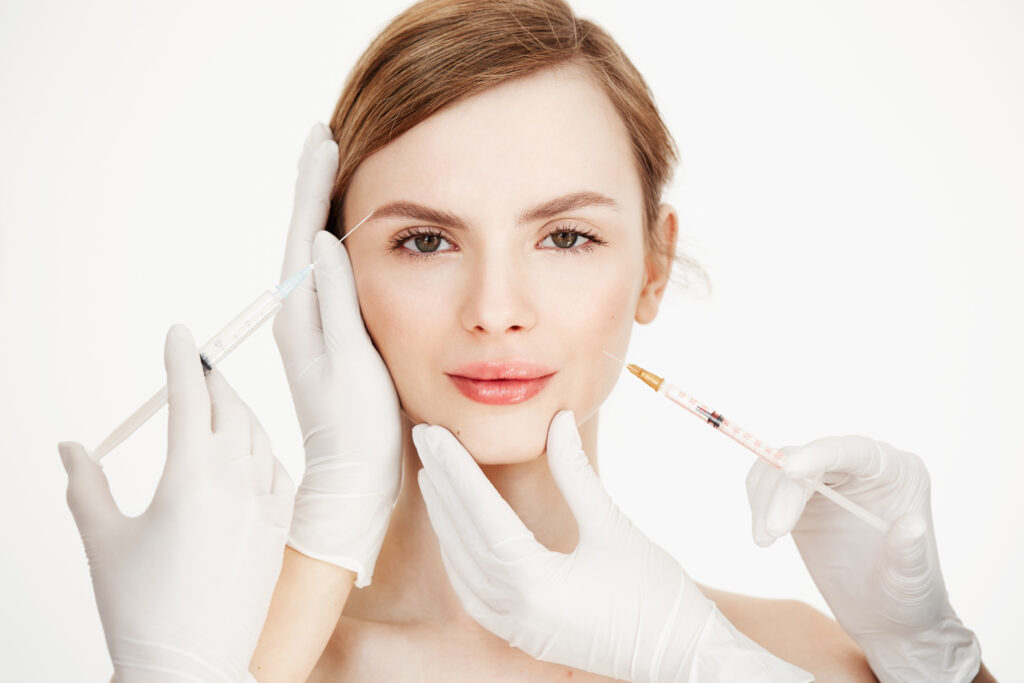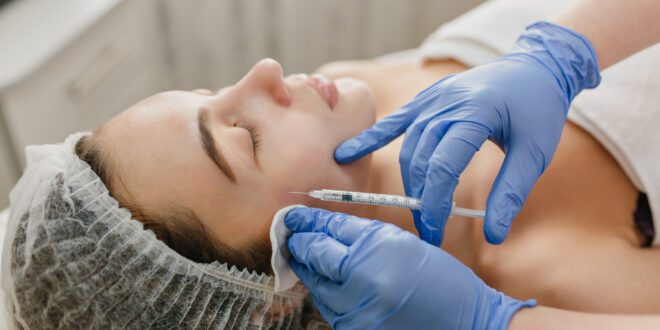Botulinum toxin has been in use since the 1970s. Over the last few years, the indications for botulinum toxin use have extended for cosmetic and noncosmetic applications. Currently, all but one of the therapeutic BoNT products are botulinum neurotoxin type-A (BoNT-A), and the most common among them are onabotulinumtoxinA (Botox), abobotulinumtoxinA (Dysport) and incobotulinumtoxinA (Xeomin). Just recently (Feb 2019) a new addition has been approved – and this one exclusively for cosmetic use – prabotulinumtoxinA (Jeuveau). There are also other BoNT products, but they are currently only available in limited markets or territories around the world.
Botulinum neurotoxin is an effective treatment in managing different medical conditions, such as strabismus, hemifacial spasm, blepharospasm, cervical dystonia, etc., and also in medical aesthetic treatments as facial rejuvenation, facial sculpting and more.
In terms of facial sculpting, BTX-A is used in the upper and lower face zones. In the upper face, it is used for chemical brow elevation and widening of the eyes. In the lower face, BTX-A may be injected into the masseter muscle to alter the shape of the jawline. In terms of facial rejuvenation, the neurotoxin may be used in the neck, for dimpled chin treatment, nasolabial folds treatment (small doses, as botulinum toxin preparations for patients with short upper lips, for example), in the lower face area (to treat perioral lip lines), and in the upper face zone (used to eliminate or diminish glabellar lines – the frown lines between the eyebrows, forehead rhytides and crow’s feet ).
The effectiveness of BoNT-A treatment in both therapeutic and aesthetic indications is the result of many factors, including the extent of disease severity or patient disability and treatment objectives, as well as injection technique (including dose and number of injected muscles), injector experience, and the holistic treatment approach, ensuring sufficient rehabilitation alongside BoNT-A injections. The quantity of BoNT-A available also significantly impacts therapeutic effectiveness. The differences in potency units mean that the quantity of neurotoxin in each product cannot be directly compared, since one Dysport unit does not equal one Botox unit, which does not equal one Xeomin unit, with different products containing different amounts of neurotoxin. While the active ingredient in each product is botulinum toxin type A, some also feature protein blends that may affect the diffusion and efficacy of the injection. Dosage is slightly different for each of the products and the results they offer are subtly different.
Xeomin (incobotulinumtoxinA) does not blend BoNT-A with complexing proteins. As a result, this neurotoxin does not need to be refrigerated and it may be more comfortable to have injected. Fewer units may be needed to achieve the desired result (in comparison with Botox and Dysport). Due to the purified state of BoNT-A, Xeomin may show results with patients are resistanct to Botox and Dysport. The results from Xeomin usually take up to a week to become visible, and last some 3 to 4 months.
Dysport (abobotulinumtoxinA) contains relative light protective proteins and has a higher rate of diffusion, which makes it ideal for treating larger areas, but is slightly less potent. It also contains milk protein and lactose, which makes it unusable when patients have milk allergies. The results may become visible within a day, but they also usually have a shorter effect.

Botox (onabotulinumtoxinA) is currently the most popular BoNT-A injection in the world. It contains a mix of botulinum toxin type A and protective proteins. The downside of this is that some patients could develop antibodies against those proteins. Botox is highly effective. It takes up to 5 days for the results to show up, and sometimes up to two weeks for the final results. The lifespan is 3-4 months.
Jauvenau (prabotulinumtoxinA) is one ot the newest products to hit the medical aesthetics market. It offers similar results (and sometimes even longer) to Botox at a lower price. The results are generally seen after up to 5 days, and last for 3 do even 6 months.
Always remember: the most important factor is to find a practitioner who is a very experienced injector and is confident using the product you wish to have injected.
Some information for this article is gathered from mdainstitute.ca.
 Happy at Home Family Problems & Solutions | Home & Health Tips
Happy at Home Family Problems & Solutions | Home & Health Tips





